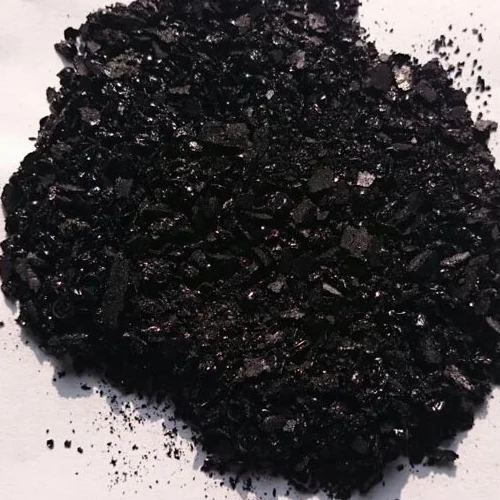Exploring the Applications and Benefits of Sulphur Black Dye Products in Textiles
Understanding Sulphur Black Dyes An Overview of Products and Applications
Sulphur black dyes have garnered significant attention in the textile industry due to their unique properties, cost-effectiveness, and versatility. As a member of the sulphur dye family, sulphur black is known for its rich, deep black color, excellent lightfastness, and wash durability. This article aims to provide an overview of sulphur black dyes, their products, applications, and the considerations involved in their use.
What Are Sulphur Black Dyes?
Sulphur black dyes are synthetic dyes that are primarily used for dyeing textiles, particularly cotton, wool, and silk. They are produced from the reaction of sulphur with aromatic compounds, leading to the formation of complex structures that yield the characteristic black color. The dyeing process typically involves reducing the dye to a soluble form, which can penetrate the fabric fibers before being oxidized back to its insoluble state, resulting in a strong and permanent color.
Characteristics of Sulphur Black Dyes
1. Color Fastness One of the hallmark features of sulphur black dyes is their exceptional color fastness to light and washing. This makes them an ideal choice for garments and textiles that will undergo frequent washing and exposure to sunlight.
2. Cost-Effectiveness Sulphur black dyes are relatively inexpensive compared to other black dye options, such as reactive or vat dyes. This affordability makes them a popular choice for manufacturers looking to reduce production costs without sacrificing quality.
3. Versatility These dyes can be used on various fabrics, including natural fibers like cotton and regenerated fibers like viscose. Their adaptability allows them to meet the diverse needs of the textile market.
4. Environmental Considerations While sulphur black dyes are generally safer than many synthetic dyes, the dyeing process can be environmentally intensive. It involves handling harmful chemicals, which necessitates strict measures to minimize pollution and waste.
Products Utilizing Sulphur Black Dyes
Sulphur black dyes are extensively utilized in a variety of textiles and products, including
- Apparel Clothing is one of the primary markets for sulphur black dyes. From denim jeans to t-shirts, the durability and wash fastness of the dye makes it suitable for everyday wear.
sulphur black dyes products

- Home Textiles Items such as curtains, upholstery, and bedding often use sulphur black dyes for their rich color and durability. Consumers value these features in home decor, where longevity and aesthetic appeal intertwine.
- Industrial Fabrics Sulphur black dyes also find their way into the manufacturing of industrial textiles, such as bags, tarpaulins, and protective gear, where resistance to wear and tear is critical.
- Leather In addition to textiles, sulphur black is sometimes used in leather goods, providing an appealing color and contributing to the leather's overall quality and durability.
Application and Dyeing Process
The application of sulphur black dyes generally involves several key steps preparation of the fabric, dyeing, and then oxidizing the dye to fix it in place.
1. Preparation The fabric must be pre-treated to remove any impurities that could hinder dye penetration. This might involve scouring and bleaching, particularly for cotton fabrics.
2. Dyeing The fabric is then immersed in a dye bath containing the reduced form of the sulphur black dye. The temperature and pH are carefully controlled to ensure optimal dye uptake.
3. Oxidation After the dyeing process, the dyed fabric is treated with an oxidizing agent to convert the dye back to its insoluble form. Common oxidizing agents include hydrogen peroxide or sodium dichromate.
4. Finishing Finally, the fabric may undergo various finishing processes to enhance its feel, appearance, and performance characteristics.
Conclusion
Sulphur black dyes represent a significant category of dyes within the textile industry, largely due to their favorable attributes in terms of color, cost, and application versatility. As businesses and consumers become more environmentally conscious, the dyeing industry faces the challenge of balancing quality and sustainability. By adopting responsible practices and innovations in dye application, the future of sulphur black dyes may continue to thrive while addressing the environmental concerns associated with synthetic dyes. In this evolving landscape, the importance of sulphur black dyes, through their widespread use in apparel, home textiles, and industrial products, cannot be overstated.
-
The Timeless Art of Denim Indigo Dye
NewsJul.01,2025
-
The Rise of Sulfur Dyed Denim
NewsJul.01,2025
-
The Rich Revival of the Best Indigo Dye
NewsJul.01,2025
-
The Enduring Strength of Sulphur Black
NewsJul.01,2025
-
The Ancient Art of Chinese Indigo Dye
NewsJul.01,2025
-
Industry Power of Indigo
NewsJul.01,2025
-
Black Sulfur is Leading the Next Wave
NewsJul.01,2025

Sulphur Black
1.Name: sulphur black; Sulfur Black; Sulphur Black 1;
2.Structure formula:
3.Molecule formula: C6H4N2O5
4.CAS No.: 1326-82-5
5.HS code: 32041911
6.Product specification:Appearance:black phosphorus flakes; black liquid

Bromo Indigo; Vat Bromo-Indigo; C.I.Vat Blue 5
1.Name: Bromo indigo; Vat bromo-indigo; C.I.Vat blue 5;
2.Structure formula:
3.Molecule formula: C16H6Br4N2O2
4.CAS No.: 2475-31-2
5.HS code: 3204151000 6.Major usage and instruction: Be mainly used to dye cotton fabrics.

Indigo Blue Vat Blue
1.Name: indigo blue,vat blue 1,
2.Structure formula:
3.Molecule formula: C16H10N2O2
4.. CAS No.: 482-89-3
5.Molecule weight: 262.62
6.HS code: 3204151000
7.Major usage and instruction: Be mainly used to dye cotton fabrics.

